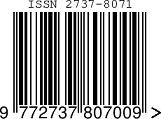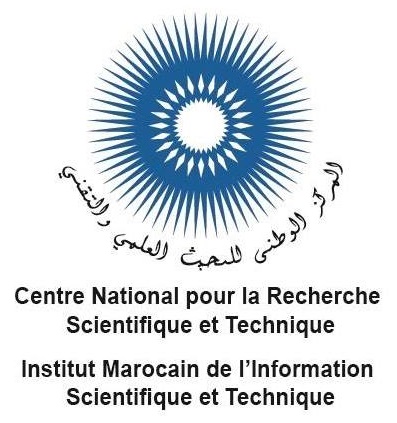The Elasticity and viscosity of polyvinyl alcohol / sodium bicarbonate (PVA/ NaHCO3) and polyvinyl alcohol /sodium chloride (PVA/ NaCl) samples
Keywords:
Polyvinyl alcohol , sodium bicarbonate , sodium chloride, Stress viscosityAbstract
Polyvinylalcohol solutions of different concentrations (0.1, 0.2, 0.3, 0.4, 0.5%) of Sodium bicarbonate and Sodium chloride were prepared, then poured onto a glass plate and allowed to dry at room temperature. Thin films were formed. Viscosity, stress and strain were measured for samples The results indicate that the elasticity of the samples in the case of NaHCO3 decreased, where the sample with zero concentration was cut with stress (166X 105 N), while the sample with a concentration 5% for NaHCO3 was cut with stress equal to (107X104 N), but, in the case of NaCl it increased, where the sample with zero concentration was cut with stress (166X 105 N) while the sample with a concentration 5% for NaCl was cut with stress equal to (808X106 N. Young's modulus decreases with respect to the samples in the case of NaHCO3, while it increases in the case of NaCl, The relative viscosity increased. Viscosity of the samples that contained NaHCO3 was higher than that of the samples that contained NaCl, while the intrinsic viscosity of all the samples decreases. These results can be used to benefit from them in many fields.
Downloads
References
Dorel Feldman.(2020). ” Poly (Vinyl Alcohol) Recent Contributions to Engineering and Medicine”, Journal of composites science, 4, 175; doi: 10. 3390/jcs4040175.
M. Aslam, M. A. Kalyar, Z. Al. Raza. (2018). “Polyvinyl Alcohol: A Review of Research Status and Use of Polyvinyl Alcohol Based Nanocomposites”, Research Gate, Polymer Engineering and Science· DOI: 10.1002/pen.24855
P. A Putro, N. Yudasari, and A. Maddu. ( 2019). “Spectroscopic Study on the Film of Polyvinyl Alcohol and Carboxymethyl Cellulose as Polymer Electrolyte Materials”, Journal of Physics: Conference Series, 1491.012033 doi:10.1088/1742-6596/1491/1/012033.
David H.S. (2017).” Pharmacology and Therapeutics for Dentistry, 28 - Drugs Acting on the Gastrointestinal Tract”,Science Direct journal and book, Pages 404-416.seventh edition. https://www.sciencedirect.com/science/article/pii/B978032339307200028X https://www.sciencedirect.com/topics/neuroscience/sodium-bicarbonate
Sathyasree. M, and Sivakumar.J. (2018). “Sodium bicarbonate: A review and its uses in dentistry”, REVIEW ARTICLE, Volume 29, Issue 5, Page 672-677. DOI: 10.4103/ijdr.IJDR_30_17.
Dang. X. L and Yong.Y. N. (2018). “Baking soda: an ultra-cheap and air stable electron injection layer for organic electronic devices”, Journal of Materials Chemistry C, 6, 12871-12878. DOI https://doi.org/10.1039/C8TC04421J.
Ra´ul. F.A, and Marcia. C. B.( 2018). “Sodium Chloride, NaCl/?: New Force Field”, Cornell University, arXiv:1508.01971v2. https://arxiv.org/pdf/1508.01971.pdf.
S. Ravishankar, and V.K. Juneja. (2014).” Reference Module in Food Science, Encyclopedia of Food Microbiology, PRESERVATIVES | Traditional Preservatives – Sodium Chloride”, Science Direct journal and book, 2014, Pages 131-136. Second Edition. https://doi.org/10.1016/B978-0-12-384730- 0.00259-7.
Osoka. E.C, Onukwuli.O. D. (2018). “Determination of Mechanical Properties from Stress-Strain Data: A New Approach”, International Journal of Engineering Research and Advanced Development, Volume 4, Issue 05, DIP: 18.03.08/20180405. http://www.ijerad.redmac.in
Lyudmila Frishter. (2018). “Comparison of the stress and strain intensity factors for the corner area of the structure boundary”, MATEC Web of Conferences 193, 03029. https://doi.org/10.1051/matecconf/201819303029
Maurya. G.” Selection of material through ‘Thermal-Stress’ analysis on Fusion 360 for a brake rotor”, International Journal of Engineering and Applied Physics (IJEAP), Vol. 1, pp. 285~294, 2021.
Sarah. H. A, Ali. A. D, Anwar. H. Al, and Haidar. J.M. (2019). “Measure liquid viscosity by tracking falling ball Automatically depending on image processing algorithm”, Journal of Physics: Conf. Series 1294 022002 doi:10.1088/1742-6596/1294/2/022002.
Leilei. T, Meng.Y, Xiang. L, Wenhui. L, Bo. Z, Zhen. C, Yufei. Z. (2019). “Research on polymer solution rheology in polymer flooding for Qikou reservoirs in a Bohai Bay oilfield” , Journal of Petroleum Exploration and Production Technology .703–715. https://doi.org/10.1007/s13202-018-0515-7
A.V.Pocius. (2002). “Adhesion and Adhesives Technology AnIntroduction”, Carl Hanse Verlag Munich UK 2nd edition.
Chao. C, M. A. Garrido, J. Ruiz-Hervias, Zhu. Z,1 and Le-le Zhang.(2018).” Representative Stress-Strain Curve by Spherical Indentation on Elastic-Plastic Materials”, Advances in Materials Science and Engineering Volume 2018, Article ID 8316384, 9 pages. https://doi.org/10.1155/2018/8316384
S.S. Hamza, S. El-sabbagh, and F. Shokr. (2008).” Elastic Behavior of NR/IIR Rubber BlendLoaded with Different Compatibilizers”, Internatioal Journal of polymeric Materials, 57. 203. 215.
M. Abu- Abdeen. (2001). “Degradation of the Mechanical properties of composite vulcanizates loaded with paraffin wax”, Journal of Applied Polymer, vol.81, 2265-m2270.
EL-Ashhab. F, Sheha. L, Abdalkhalek. M, Hussein. A. K. (2013). “The influence of gamma irradiation on the intrinsic properties of cellulose acetate polymers”, Journal of the Association of Arab Universities for Basic and Applied Sciences, 14,pp. 46–50. http://dx.doi.org/10.1016/j.gaubass.2012.12001
P.Ramón, G. H. Cifre, José, L. Martínez, M.del Carmen, G. de la Torre. (2008).” Determination of intrinsic viscosities of procedures”, Colloid Polym Sci. 286:1223–1231. DOI 10.1007/s00396-008-1902-2.
M. Acevedo, J. Laitano, M. Marrugo, A. Herrera, Á. Realpe. (2017), International Journal of ChemTech Research, 10. 199-208.
Zhao. Y, Wu. X, Wang. L, Xua. L, Weib. S. 2012. A facile method for electrospinning of Ag nanoparticles /poly (vinylalcohol)/carboxymethyl-chitosan nanofibers, Applied Surface Science 258, 8867– 8873. http://dx.doi.org/10.1016/j.apsusc.2012.05.106.
Hosnie. B, Seyed.H.B. (2015). Chitosan/ Nanosilver Composites with Enhanced Morphology and Microbiogical properties, Journal of Textiles and polymers, vol 3, No 2.
R. Pamies, J. Ginés. H, M.del Carmen, J. García. (2008). “Determination of intrinsic viscosities of macromolecules and nanoparticles. Comparison of single-point and dilution procedures” Colloid PolymSci (2008) 286:1223–1231. DOI 10.1007/s00396-008-1902-2
A. K. Mahanta, P. K. Pattnayak.(2015).” Green analytical methods for determination of intrinsic viscosity of hydroxyl terminated polybutadiene “J. Mater. Environ. Sci. 6 (9) 2377-2385
Downloads
Published
How to Cite
Issue
Section
License
Copyright (c) 2022 Najla Ali

This work is licensed under a Creative Commons Attribution 4.0 International License.
Copyright on any article in the International Journal of Engineering and Applied Physics is retained by the author(s) under the Creative Commons license, which permits unrestricted use, distribution, and reproduction provided the original work is properly cited.
License agreement
Authors grant IJEAP a license to publish the article and identify IJEAP as the original publisher.
Authors also grant any third party the right to use, distribute and reproduce the article in any medium, provided the original work is properly cited.
Most read articles by the same author(s)
- Najla Ali, The Study of the evolution of certain electrical properties of a carboxymethyl cellulose by irradiating it and adding different concentrations of materials at different temperatures , International Journal of Engineering and Applied Physics: Vol. 4 No. 2: May 2024















